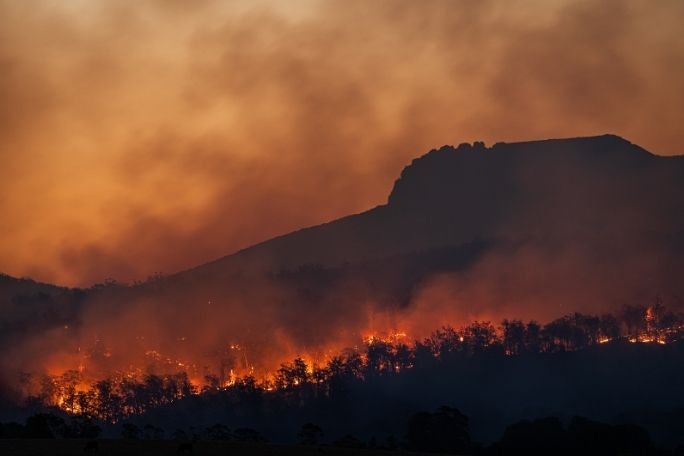Lesson summary
Students will consider persuasive techniques and persuasive writing in letter form. They will read a short article from The Conversation about the convergence of bushfire and holiday seasons in Australia. Students will consider the presented opinion and reflect on this to formulate their own opinion. Next they will complete a set of activities to activate prior learning on persuasive techniques and will then apply their understanding of these techniques and the content of the article to plan, draft and edit a persuasive letter expressing their own point of view on this current issue.
This lesson is designed to be completed independently by students.
Learning intentions:
Students will...
- recognise one way society could adapt to the impacts of changing climates
- understand different persuasive techniques and how these can be used to argue for and/or against an issue.
Success criteria:
Students can...
- identify and apply various persuasive techniques
- read and reflect on a news article and formulate your own opinion on an issue
- write a persuasive letter that expresses your own opinion.
Lesson guides and printables
Curriculum mapping
Australian curriculum content descriptions:
Year 7 English:
- Understand that authors innovate with text structures and language for specific purposes and effects (ACELA1553)
- Analyse and explain the ways text structures and language features shape meaning and vary according to audience and purpose (ACELY1721)
- Plan, draft and publish imaginative, informative and persuasive texts, selecting aspects of subject matter and particular language, visual, and audio features to convey information and ideas (ACELY1725)
- Use a range of software, including word processing programs, to confidently create, edit and publish written and multimodal texts (ACELY1728)
General capabilities: Literacy, Ethical Understanding, Critical and Creative Thinking.
Resources required
- Access to a computer for research
- Persuasive Letter Template
Tips for parents and carers
Students can feel a range of emotional responses when discussing bushfires. If you need further support for students please refer to:
https://www.beyondblue.org.au/the-facts/bushfires-and-mental-health/
Additional info
Background information:
The 2019/2020 Australian summer was overshadowed by bushfires raging across the country. Family holiday plans were forced to change as communities banded together to fight against the catastrophic fires.
Learning@Home resources are designed for parents and teachers to use with children in the home environment. They can be used as stand-alone activities or built into existing curriculum-aligned learning programs. Our Learning@Home series includes two types of resources. The first are fun and challenging real-world activities for all ages, the second are self-directed lessons for upper primary and secondary students. These lessons support independent learning in remote or school settings.


Welcome back!
Don't have an account yet?
Log in with:
By signing up to Cool.org you consent and agree to Cool's privacy policy to
store, manage and process your personal information. To read more, please see
our privacy policy here(Opens in new tab).
Create your free Cool.org account.
Many of our resources are free, with an option to upgrade to Cool+ for premium content.
Already have an account?
Sign up with:
By signing up to Cool.org you consent and agree to Cool's privacy policy to
store, manage and process your personal information. To read more, please see
our privacy policy here(Opens in new tab).